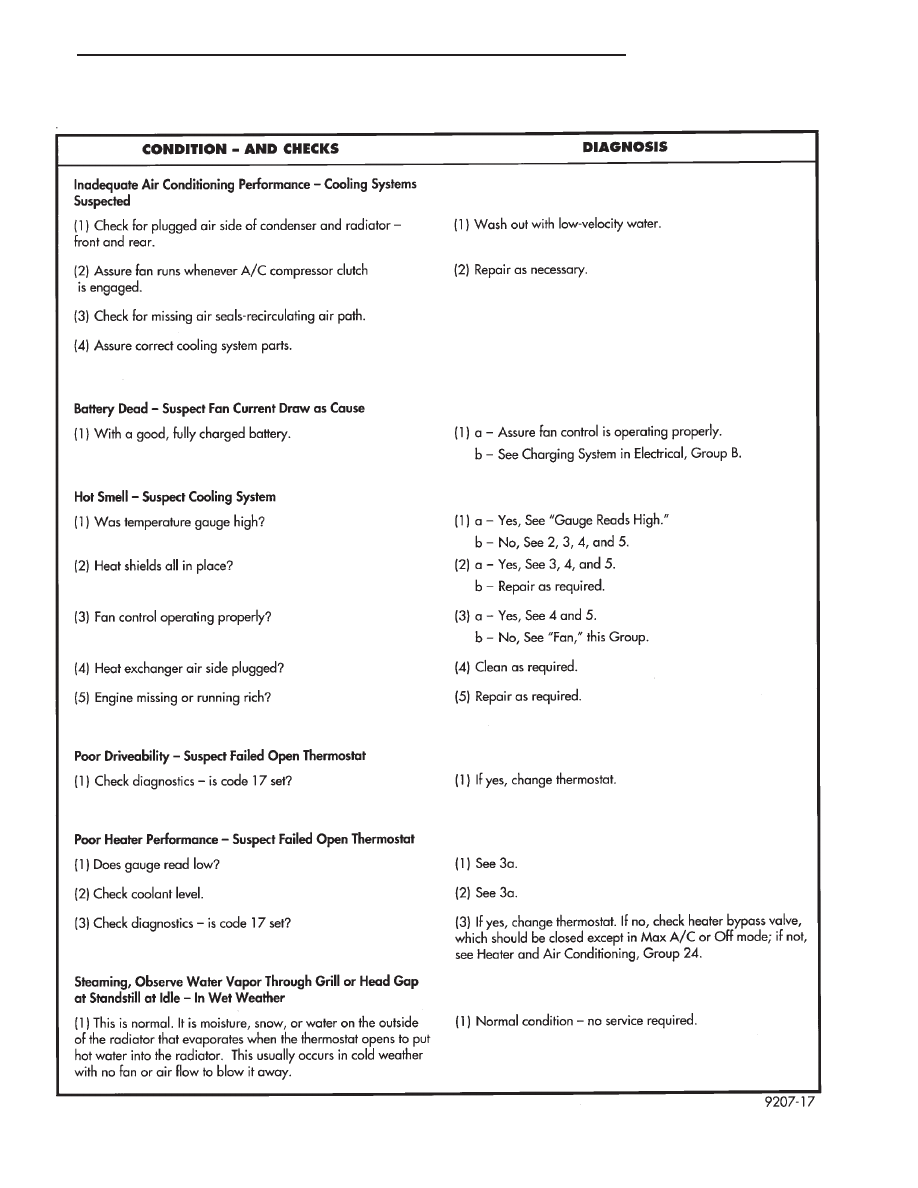Chrysler Town & Country/Voyager, Dodge Caravan, Plymouth Voyager. Manual - part 182

COOLING SYSTEM DIAGNOSIS
.
COOLING SYSTEM
7 - 9
Index Chrysler Chrysler Town & Country/Voyager, Dodge Caravan, Plymouth Voyager - service repair manual 1992 year
|
|
|

COOLING SYSTEM DIAGNOSIS . COOLING SYSTEM 7 - 9 |